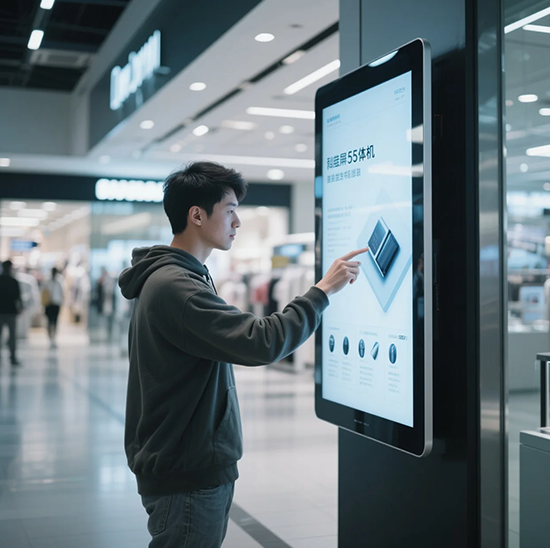In industrial automation—from assembly lines to packaging facilities—the Industrial Touch Panel and PLC (Programmable Logic Controller) work as a inseparable pair: the PLC acts as the “brain” that controls machinery, while the Industrial Touch Panel serves as the “interface” that lets operators monitor status, adjust parameters, and troubleshoot issues. A poorly integrated system can lead to delayed data transmission, unresponsive controls, or even production downtime—costing factories time and money. However, following best practices for integration ensures the two systems communicate seamlessly, turning complex automation into intuitive, reliable operations. This guide breaks down the critical steps to integrate an Industrial Touch Panel with a PLC, common pitfalls to avoid, and how to optimize the system for long-term use—helping you build a robust automation setup that meets your production needs.

Pre-Integration Preparation: Lay the Foundation for Success
Before connecting your Industrial Touch Panel to a PLC, proper preparation prevents costly mistakes. Focus on these key steps:
1. Verify Compatibility Between Industrial Touch Panel and PLC
Not all touch panels and PLCs communicate natively—compatibility is non-negotiable:
- Protocol matching: Confirm both devices support the same communication protocol. The most common industrial protocols include Modbus RTU/TCP, Ethernet/IP, PROFINET, and RS-485. For example, if your PLC uses PROFINET (Por exemplo, Siemens S7-1200), your Industrial Touch Panel must also support PROFINET.
- Hardware connections: Check the physical ports (Ethernet, USB, RS-485) on both devices. Ensure the touch panel has the right port to connect to the PLC—e.g., a PLC with only an RS-485 port requires a touch panel with an RS-485 port (or a compatible adapter).
- Software version alignment: Update the PLC’s firmware and the touch panel’s HMI (Human-Machine Interface) software to the latest versions. Outdated software often causes communication errors—for example, an old PLC firmware may not support new touch panel features.
2. Define Clear Integration Goals and Use Cases
Before setup, map out what you want the integrated system to achieve—this avoids unnecessary complexity:
- Operator needs: List the tasks operators will perform (Por exemplo, “Monitor conveyor speed,” “Adjust temperature setpoints,” “View error logs”). This determines which PLC data to display on the touch panel.
- Data priority: Identify critical data (Por exemplo, “Emergency stop status,” “Low pressure alerts”) that needs real-time display, and non-critical data (Por exemplo, “Weekly production totals”) that can be accessed via menus.
- Safety requirements: Note safety-related functions (Por exemplo, “Lockout/tagout controls”) that require password protection or physical confirmation on the touch panel—ensuring compliance with industrial safety standards (Por exemplo, ISO 13849).
Step-by-Step Integration: From Setup to Testing
Follow this structured process to integrate your Industrial Touch Panel with a PLC, ensuring reliability and functionality:
1. Physical and Network Setup
- Connect the devices: Use industrial-grade cables (Por exemplo, shielded Ethernet cables for TCP/IP, twisted-pair cables for RS-485) to minimize interference from machinery. For Ethernet connections, assign static IP addresses to both the touch panel and PLC (avoids IP conflicts in factory networks).
- Grounding and surge protection: Ground both devices properly to reduce electrical noise (a common cause of communication drops). Install surge protectors for power and network lines—critical in factories with high-voltage equipment.
2. Configure Communication in HMI Software
Most Industrial Touch Panels use HMI software (Por exemplo, Siemens WinCC, Allen-Bradley FactoryTalk, or Delta DOPSoft) to connect to PLCs:
- Add the PLC as a “device”: In the HMI software, select your PLC model (Por exemplo, Allen-Bradley Micro850) and the communication protocol (Por exemplo, Ethernet/IP). Enter the PLC’s IP address or port number to establish a connection.
- Map PLC tags to touch panel elements: “Tags” are the data points in the PLC (Por exemplo, “Conveyor_Speed,” “Temperature_Setpoint”). Link these tags to touch panel elements—e.g., map “Conveyor_Speed” to a digital gauge on the touch screen, or “Temperature_Setpoint” to a touch-adjustable slider.
- Set update intervals: Define how often the touch panel fetches data from the PLC (Por exemplo, 100ms for critical data, 1s for non-critical). Avoid setting intervals too short (can overload the network) or too long (causes delayed updates).
3. Test and Validate the Integrated System
Testing is critical to catch issues before full deployment:
- Basic communication test: Check if the touch panel displays live PLC data (Por exemplo, if the PLC reports “Conveyor_Speed = 50 RPM,” the touch panel should show the same value). If data doesn’t sync, troubleshoot cables, IP addresses, or protocol settings.
- Functionality test: Verify that touch panel controls work—e.g., adjust a temperature setpoint on the screen and confirm the PLC receives the new value. Test safety functions (Por exemplo, press “Emergency Stop” on the touch panel and ensure the PLC stops machinery).
- Stress test: Run the system for 24–48 hours under normal production load. Monitor for communication drops, lag, or data errors—address any issues (Por exemplo, upgrade network cables, adjust update intervals) before deploying to the factory floor.
Post-Integration Optimization and Maintenance
To keep the Industrial Touch Panel-PLC system running smoothly long-term, adopt these practices:
1. Optimize Performance for Reliability
- Reduce network traffic: Limit the number of tags the touch panel fetches—only include essential data. Use “polling groups” (Por exemplo, group critical tags to update every 100ms, non-critical to update every 1s) to balance speed and network load.
- Add redundancy for critical systems: For mission-critical operations (Por exemplo, pharmaceutical manufacturing), use dual Ethernet connections between the touch panel and PLC. If one connection fails, the system switches to the backup—minimizing downtime.
2. Establish Routine Maintenance
- Software updates: Schedule quarterly checks for PLC firmware and HMI software updates. Apply updates during planned downtime to avoid disrupting production.
- Hardware inspections: Monthly, check cables for wear or loose connections. Clean the Industrial Touch Panel’s screen (with a microfiber cloth) and vents (para evitar superaquecimento)—dust buildup can cause touch responsiveness issues or overheating.
- Backup configurations: Save copies of the touch panel’s HMI project and PLC program to a secure location. If the system fails, you can quickly restore settings instead of rebuilding from scratch.
FAQs About Industrial Touch Panel Integration with PLC
Q1: Can I integrate multiple Industrial Touch Panels with one PLC?
A1: Yes—most PLCs support multiple touch panel connections (Por exemplo, a Siemens S7-1500 can connect to 10+ touch panels via Ethernet/IP). Ensure the PLC has enough processing power to handle the additional data requests, and assign unique IP addresses to each touch panel to avoid conflicts.
Q2: What if the Industrial Touch Panel and PLC use different protocols (Por exemplo, touch panel uses Modbus, PLC uses PROFINET)?
A2: Use a protocol converter (Por exemplo, a Modbus-to-PROFINET gateway). The converter translates data between the two protocols, allowing the touch panel and PLC to communicate. Choose a industrial-grade converter (IP65 rated) for factory environments.
Q3: How long does it take to integrate an Industrial Touch Panel with a PLC?
A3: For simple setups (Por exemplo, a single touch panel and PLC with matching protocols), integration takes 1–2 days (including testing). For complex systems (Por exemplo, multiple touch panels, custom tags, or protocol converters), it may take 3–5 days.
Q4: Can operators access PLC data remotely via the Industrial Touch Panel?
A4: Yes—if the touch panel supports remote access (via VPN or cloud-based HMI software). This lets managers monitor PLC data (Por exemplo, production status) from off-site, or technicians troubleshoot issues without being on the factory floor. Ensure remote access is secured with passwords and encryption.
Integrating an Industrial Touch Panel with a PLC is a critical step in building efficient, reliable industrial automation—but success depends on proper preparation, compatible hardware/software, and thorough testing. By following the best practices outlined here, you can create a system that simplifies operator tasks, reduces downtime, and aligns with your production goals.
If you’re facing challenges with Industrial Touch Panel-PLC integration (Por exemplo, protocol mismatches, communication errors, or need help scaling to multiple touch panels), Preencha o formulário em nosso site. Our industrial automation experts will analyze your PLC model, touch panel specs, and production needs to provide tailored guidance—helping you build a seamless, high-performance integrated system.

